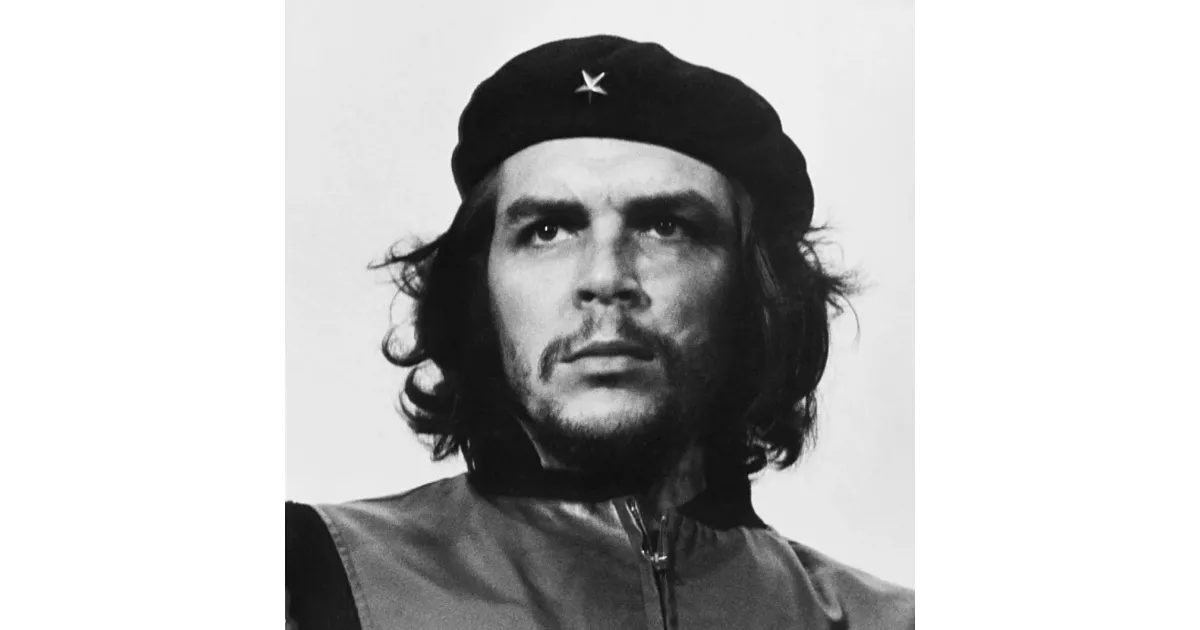How education and upbringing influenced the life of Che Guevara. A timeline of key moments.
Ernesto "Che" Guevara was a prominent Argentine Marxist revolutionary, physician, and guerrilla leader. He played a key role in the Cuban Revolution and became a significant figure in the Cuban government. Beyond his involvement in Cuba, Guevara sought to spread revolution to other countries, particularly in Africa and South America. His efforts often involved guerrilla warfare and promoting socialist ideologies. Despite his controversial legacy, Guevara remains a globally recognized symbol of rebellion and revolutionary ideals, often seen as a countercultural icon.
June 1928: Birth of Ernesto "Che" Guevara
In June 1928, Ernesto "Che" Guevara was born, marking the beginning of the life of a figure who would become a major icon of the Cuban Revolution and a global symbol of rebellion.
June 1928: Ernesto Guevara's Birth
On 14 June 1928, Ernesto Guevara was born in Rosario, Argentina, to Ernesto Guevara Lynch and Celia de la Serna y Llosa. He was the eldest of five children in an upper-class Argentine family with Spanish, Basque, and Irish ancestry.
1947: Plays for Estudiantes of Córdoba
In 1947, Che Guevara played rugby for Estudiantes of Córdoba.
1948: Plays for Yporá Rugby Club
In 1948, Che Guevara played rugby for Yporá Rugby Club.
1948: Enters University of Buenos Aires
In 1948, Guevara entered the University of Buenos Aires to study medicine.
1949: Plays for Atalaya Polo Club
In 1949, Che Guevara played rugby for Atalaya Polo Club.
1950: Solo Bicycle Trip
In 1950, Guevara embarked on a 4,500-kilometer solo trip through the rural provinces of northern Argentina on a bicycle.
1951: Continental Motorcycle Trek
In 1951, Guevara began a nine-month, 8,000-kilometer continental motorcycle trek through South America with Alberto Granado.
June 1953: Medical Degree
In June 1953, Ernesto Guevara completed his studies and received his medical degree.
July 1953: Arrival in Guatemala and Meeting Hilda Gadea Acosta
In July 1953, Guevara sought out Hilda Gadea Acosta in Guatemala City, who introduced him to high-level officials in the Árbenz government, and he also contacted Cuban exiles linked to Fidel Castro. It was during this period he acquired his nickname, Che.
July 1953: Travels Through Latin America
On 7 July 1953, Guevara set out to Bolivia, Peru, Ecuador, Panama, Costa Rica, Nicaragua, Honduras, and El Salvador.
December 1953: Letter to Aunt Beatriz
On 10 December 1953, Guevara sent a letter from San José, Costa Rica, to his aunt Beatriz, expressing his conviction that the United Fruit Company's capitalist system was harmful to average citizens and swearing to vanquish these "octopuses" on an image of Joseph Stalin.
May 1954: Arrival of Weapons from Czechoslovakia
In May 1954, a ship carrying infantry and light artillery weapons from communist Czechoslovakia arrived for the Árbenz government, prompting a response from the United States government to destabilize Guatemala.
November 1956: Granma sets out for Cuba
In November 1956, Castro's revolutionary plan commenced with an assault on Cuba from Mexico via the Granma. Upon landing, Batista's military attacked, resulting in many deaths. During this confrontation, Che Guevara swapped his medical supplies for ammunition, marking a symbolic moment.
1957: Revolutionaries regroup in Sierra Maestra
In 1957, a small group of revolutionaries regrouped in the Sierra Maestra mountains, receiving support from Frank País's urban guerrilla network, the 26 July Movement, and local campesinos. An interview with Castro by Herbert Matthews in The New York Times presented a mythical image for Castro and the guerrillas. Guevara realized the importance of the media in their struggle. He also suffered from painful mosquito bites.
February 1958: CIA Report on Guevara
In February 1958, a CIA "biographical and personality report" noted Guevara's wide range of academic interests and intellect, describing him as "quite well read" and "fairly intellectual for a Latino".
March 1958: US stops selling arms to Cuba
In March 1958, atrocities by Batista's forces led the United States to stop selling arms to the Cuban government.
January 1959: Start of the Tarará Group
In mid-January 1959, Guevara started the Tarará Group, which debated and formed new plans for Cuba's social, political, and economic development. He also began writing his book Guerrilla Warfare. In late January, he told Hilda Gadea he was involved with another woman.
January 1959: Public approval of executions
On January 22, 1959, a Universal Newsreel broadcast featured Fidel Castro asking Cubans if they approved of the executions, which they supported with a roaring "¡Sí!" (yes).
January 1959: Execution of Colonel Rojas
On January 7, 1959, Guevara ordered the execution of Colonel Rojas, the chief of police in Santa Clara. The execution was broadcast on Cuban television, becoming one of the first killings ever aired on television.
February 1959: Guevara defends executions
In February 1959, Guevara stated in a letter that the executions by firing squads were a necessity and an imposition of the people of Cuba.
June 1959: Guevara's three-month tour of Bandung Pact countries
On June 12, 1959, Castro sent Guevara on a three-month tour of mostly Bandung Pact countries. In Jakarta, he met with Indonesian president Sukarno. Guevara spent 12 days in Japan negotiating trade relations.
June 1959: Marriage to Aleida March
On June 2, 1959, Guevara married Aleida March, a Cuban-born member of the 26 July movement. The civil ceremony was held at La Cabaña military fortress.
September 1959: Guevara returns to Cuba, land seizures begin
In September 1959, upon Guevara's return to Cuba, it became clear that Fidel Castro's political influence had grown. The government initiated land seizures under the agrarian reform law, offering landowners low-interest "bonds" for compensation, which raised concerns in the United States. Wealthy cattlemen in Camagüey, along with disaffected rebel leader Huber Matos and the anti-communist wing of the 26 July Movement, opposed the land redistributions, denouncing "communist encroachment." Additionally, Dominican dictator Rafael Trujillo offered assistance to the "Anti-Communist Legion of the Caribbean," a multinational force plotting to overthrow Castro's regime during this time in September 1959.
1959: Che Guevara visits Egypt
In 1959, Che Guevara visited Egypt and established fraternal relations with Egyptian President Gamal Abdel Nasser.
1959: Application of Ley de la Sierra
In 1959, the revolutionary government extended the application of the Ley de la Sierra (Law of the Sierra) to the whole of the republic and to those it considered war criminals. This law included the death penalty for serious crimes.
March 1960: Explosion of La Coubre and aftermath
On 4 March 1960, two explosions destroyed the French freighter La Coubre in Havana Harbor, killing at least 76 people. Guevara personally assisted victims. Fidel Castro blamed the CIA for this "act of terrorism". A state funeral was held for the victims. At the memorial service, Alberto Korda took the famous photograph of Guevara, now known as Guerrillero Heroico.
September 1960: Guevara defines Cuban revolution as Marxist
In September 1960, at the First Latin American Congress, when asked about Cuba's ideology, Guevara defined it as Marxist, stating that the revolution discovered the paths that Marx pointed out. He cited Karl Marx as his ideological inspiration and defended his political stance.
December 1960: Guevara signs trade agreement in East Berlin
At the end of 1960, as part of establishing closer commercial relationships with Eastern Bloc states, Guevara visited East Berlin and signed a trade agreement there on 17 December 1960. While in East Germany, he met Tamara Bunke (later known as "Tania"), who was assigned as his interpreter.
1960: Construction of Guanahacabibes labor camp
At some point in 1960, Guevara ordered the construction of the Guanahacabibes camp: a labor camp to "rehabilitate" his employees who had committed infractions at work. Historians have had difficulty characterizing the camp, because it was extra-legal and thus poorly documented.
1960: Cooke Moves to Cuba and Associates Peronism with Fidelismo
In 1960, John William Cooke, a close associate of Perón, moved to Cuba and associated Peronism with Fidelismo, seeing the left-wing nationalism of Peronism and Marxism-Leninism of Fidelismo as complementary.
April 1961: Bay of Pigs Invasion
On 17 April 1961, 1,400 US-trained Cuban exiles invaded Cuba during the Bay of Pigs Invasion. Guevara did not play a key role in the fighting, as one day before the invasion a warship carrying Marines faked an invasion and drew forces commanded by Guevara to that region. It was also during this deployment that he suffered a bullet grazing to the cheek when his pistol fell out of its holster and accidentally discharged.
August 1961: Guevara at economic conference in Uruguay
In August 1961, during an economic conference of the Organization of American States in Punta del Este, Uruguay, Che Guevara sent a note of "gratitude" to United States President John F. Kennedy through Richard N. Goodwin, Deputy Assistant Secretary of State for Inter-American Affairs. Guevara antagonistically attacked the United States' claim of being a "democracy", speaking out against the "persecution" that in his view "drove scientists like Oppenheimer from their posts, deprived the world for years of the marvelous voice of Paul Robeson, and sent the Rosenbergs to their deaths against the protests of a shocked world."
April 1965: Guevara arrives in Congo to support the Simba movement
On April 24, 1965, Guevara, under the alias Ramón Benítez, arrived in Congo with a Cuban expedition to support the leftist Simba movement. They collaborated with Laurent-Désiré Kabila. Guevara stated that Patrice Lumumba’s murder should be a lesson for all.
June 1965: Castro addresses speculation regarding Guevara's fate
On June 16, 1965, amidst international speculation about Guevara's disappearance, Castro stated that the people would be informed when Guevara himself wished to let them know.
September 1965: ANC launches Operation South
On 27 September 1965, the ANC and its allies launched Operation South to destroy Kabila's forces. With the support of Che and his Cubans, the Simbas put up substantial resistance.
October 1965: Castro reveals Guevara's farewell letter
On October 3, 1965, Castro publicly revealed Che Guevara's undated "farewell letter," in which Guevara reaffirmed his solidarity with the Cuban Revolution but declared his intention to leave Cuba to fight for the revolutionary cause abroad. He also resigned from his positions and renounced his Cuban citizenship.
November 1965: Guevara leaves Congo
On November 20, 1965, suffering from dysentery and acute asthma, and disheartened after seven months of defeats and inactivity, Guevara left Congo with the Cuban survivors. Guevara concluded that he left Congo because: "The human element failed. There is no will to fight. The [rebel] leaders are corrupt. In a word ... there was nothing to do."
October 1966: First incursion of Che Guevara in Bolivia
On 3 October 1966, Che Guevara had the first incursion in Bolivia. This reconstitution is based on top-secret documents kept in the UNESCO protected Archives of Terror, in Paraguay.
November 1966: First Diary Entry Documenting Guerrilla Campaign
In November 1966, Che Guevara's 30,000-word, hand-written diary documented the events of the guerrilla campaign in Bolivia, with the first entry on November 7, 1966, shortly after his arrival at the farm in Ñancahuazú.
November 1966: Guevara Arrives in Bolivia
On November 3, 1966, Guevara secretly arrived in La Paz, Bolivia, on a flight from Montevideo. He used the false name Adolfo Mena González and posed as a middle-aged Uruguayan businessman working for the Organization of American States.
April 1967: Régis Debray Captured with Guevara in Bolivia
In April 1967, French intellectual Régis Debray was captured while with Che Guevara in Bolivia. Debray described a destitute situation where Guevara's men suffered malnutrition, lack of water, absence of shoes, and only possessed six blankets for 22 men.
October 1967: Last Diary Entry Documenting Guerrilla Campaign
In October 1967, Che Guevara's last diary entry was dated October 7, 1967, the day before his capture. The diary documented events of the guerrilla campaign in Bolivia, and it described Guevara's increasing illness and reliance on offensives to obtain medicine.
1967: Announcement that Guevara was serving the revolution in Latin America
At the 1967 International Workers' Day rally in Havana, the acting minister of the armed forces announced that Guevara was "serving the revolution somewhere in Latin America".
1967: Abandonment of Guerrilla Warfare as Instrument of Cuban Foreign Policy
Che Guevara's death in 1967 led to the abandonment of guerrilla warfare as an instrument of Cuban foreign policy, ushering in a rapprochement with the Soviet Union and the reformation of the government along Soviet lines.
1967: Early Successes of the ELN
During the early months of 1967, Guevara's guerrilla force, operating as the ELN, achieved a number of successes against Bolivian army regulars in the mountainous Camiri region.
August 1968: Debray Interview on Guevara's Capture
In August 1968, Régis Debray, captured with Guevara in April 1967, gave an interview from prison. Debray spoke on the circumstances of Guevara's capture and recounted Guevara being "optimistic about the future of Latin America" despite the futile situation, and remarked that Guevara was "resigned to die in the knowledge that his death would be a sort of renaissance".
1968: Internment of "Anti-Socials" in UMAP Labor Camps
Between 1965 and 1968, Cubans labeled as "anti-socials" who had fallen outside the "new man" concept, were interned in UMAP labor camps.
1968: Che Guevara's Image During Riots and Protests
In 1968, during riots in Berlin, France, Chicago, and on American college campuses, young protestors wore Che Guevara T-shirts and carried his pictures during their marches, symbolizing his continued influence.
1969: Guevara's Irish lineage
In 1969, Guevara's father was quoted on his son's Irish lineage: "The first thing to note is that in my son's veins flowed the blood of the Irish rebels..." .
Mentioned in this timeline
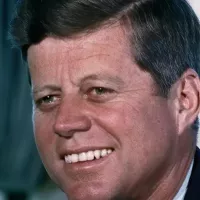
John F Kennedy JFK was the th U S President...
Sudan officially the Republic of the Sudan is a country...
The Union of Soviet Socialist Republics USSR existed from to...
India officially the Republic of India is a South Asian...
Morocco officially the Kingdom of Morocco is a North African...
Germany officially the Federal Republic of Germany is a Western...
Trending

Jermaine Demetrius Burton is an American professional football wide receiver and return specialist currently playing for the Cincinnati Bengals of...

7 months ago Paolo Banchero's NBA Journey: Overcoming Injury, Praising Teammates, and Hope for the Future

6 months ago Julia Fox Ditches Beauty Trend, Net Worth Soars: An 'It Girl' in 2025
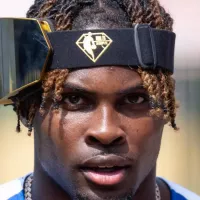
1 month ago Jayden Reed Injury Update: Packers WR Setback and Recovery Timeline
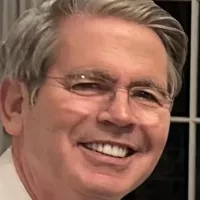
14 days ago Scott Bessent Predicts Oil Price Drop Contingent on Venezuelan Events; Gas Prices Impacted.
4 days ago David Corenswet Visits Alma Mater; Brainiac Shortlist Includes Bang, Smith, and Rockwell
Popular
Matt and Ross Duffer known as the Duffer Brothers are...
Aftyn Alyssa Behn is an American politician currently serving as...

Candace Owens is an American conservative political commentator and author...

XXXTentacion born Jahseh Dwayne Ricardo Onfroy was a controversial yet...
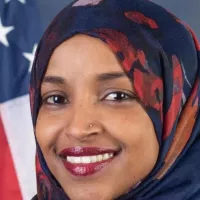
Ilhan Omar is an American politician currently serving as the...
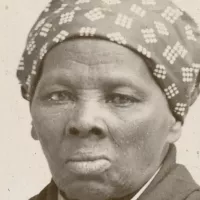
Harriet Tubman was a pivotal American abolitionist and social activist...
